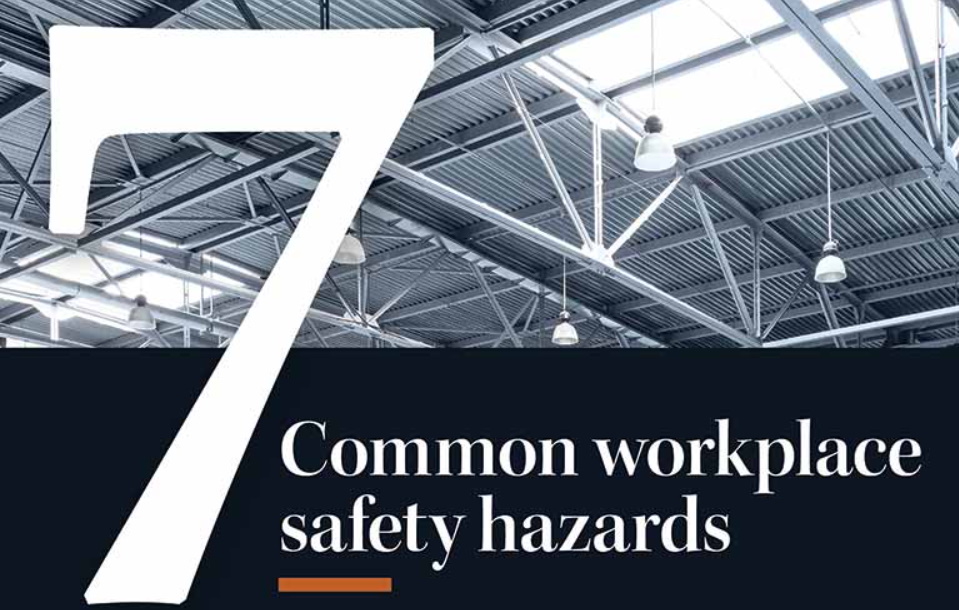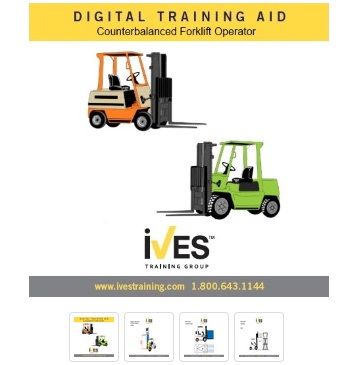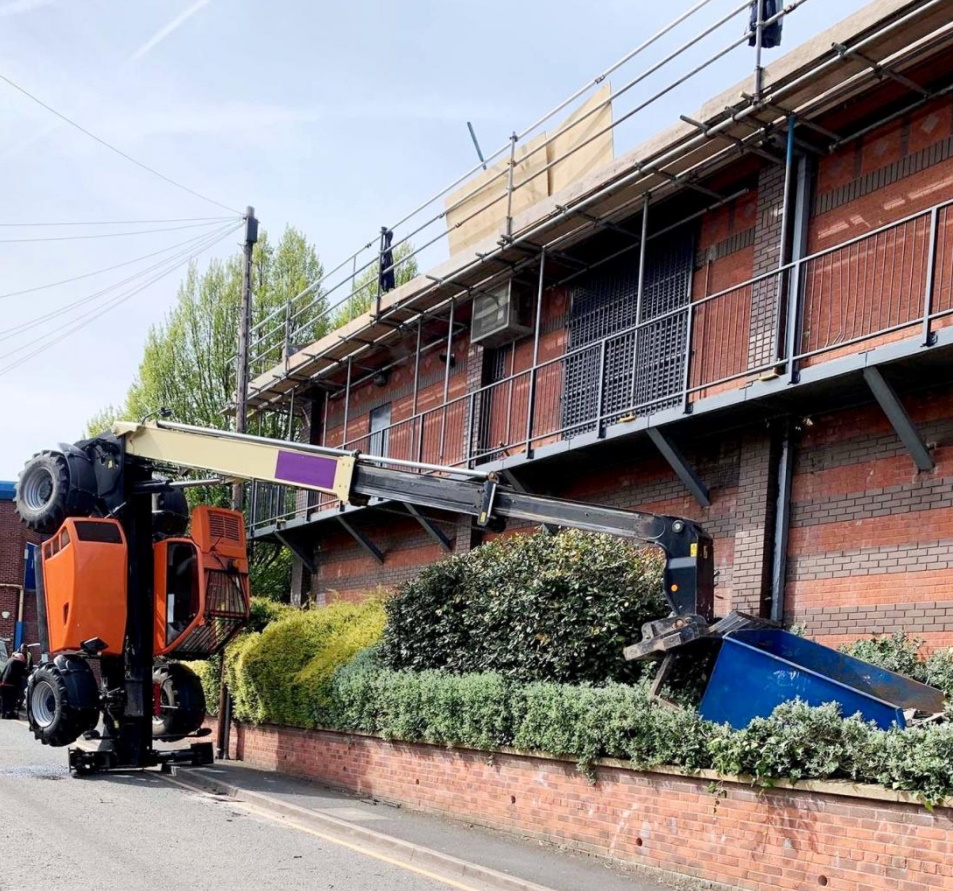7 Common workplace safety hazards

The National Safety Council has a team of consultants who travel across the country – and the world – to visit worksites and conduct safety audits. But no matter where each team member is, chances are good that he or she will spot one or more of seven common safety hazards. Here, NSC consultants JoAnn Dankert, Namir George and Rachel Harrington identify for Safety+Health the workplace trouble spots they see over and over again.
1.Working at height
It shouldn’t be a surprise that Dankert, Harrington and George frequently spot hazards associated with working at height. Bureau of Labor Statistics data shows that falls to a lower level accounted for 14 percent of all fatalities in 2014, and OSHA standards related to scaffolding and ladders are regularly among the most frequently cited violations.
Dankert, an NSC senior consultant based in Arizona, said hazards associated with working at height can originate from a lack of understanding. Employers may not know they have to provide fall protection, or the fall protection gear may not be worn properly or not hooked up to anything. Some employers don’t even have a written fall protection procedure or process.
Employers need to identify all locations where fall protection is necessary – as well as where the engineered anchor points are – and train employees and regularly audit the fall protection program, she said.
Some of those locations may be surprising. Dankert recently visited a manufacturing facility that was expanding and had added to its roof a new 12-foot-tall chiller next to three existing ones. But something was missing. The old equipment had proper fall protection, including swing gates and a railing for when maintenance work is needed, but the new chiller didn’t.
“The fall hazard was not about doing work and falling off the roof – it was the equipment on top of that roof,” Dankert said. “These are hidden places you don’t go to very often, and you just don’t think about it.”
Dankert cites this case as an example of the need for safety professionals to have a seat at the table when decisions on design or purchases are made. Their input, she said, can save employers time and money.
More advice: Buy the correct-sized gear for workers, and keep in mind that although some work environments may have anchor points readily available, other locations may need an engineer to install them. Remind employees to hook to the anchor point when working at height, and keep a close eye on how well personal protective equipment is holding up. Environments with sharp edges, chemicals or welding, for example, can weaken a harness. Regularly inspect gear and remove damaged PPE from service.
“Fall protection is like other PPE – it’s not good forever and ever,” Dankert said.
In some situations, it may be beneficial to forgo using personal fall protection equipment and instead build a platform with standard railings and a swing gate in front of a fixed ladder. Although such a platform costs money, Dankert said, it may be less costly than creating a fall protection plan, buying the PPE, and training and re-training employees.
2.Poor housekeeping
Clutter blocking fire exits, aisles and emergency exits is a housekeeping problem that George, who is based in the United Kingdom as NSC’s manager of international consulting services, sees often.
Another common problem? Over-stacking loads on racks in a warehouse that bring them too close to a sprinkler head, which can limit the sprinkler’s efficiency in an emergency. Clutter, leaks or standing water also can contribute to slips, trips and falls.
Workers shouldn’t wait for housekeeping or sanitation crews to take care of these issues, Dankert said. Instead, they should clean as they go. “Just because it’s a dirty process doesn’t mean you shouldn’t clean up spills,” she said.
If the clutter or spill requires specialized training to clean up, then employees need to alert their supervisor, who can send in the appropriate staff. Additionally, Dankert recommends setting aside a few minutes at the end of each shift, or on a Friday afternoon, to clean up before leaving for the day.
When it comes to storage, employers need to make sure appropriate areas are made available, notes Harrington, an NSC senior consultant based in Illinois. Harrington said she often sees electrical rooms used inappropriately for storage, with supplies blocking electrical installations.
Even if clearance between the stored supplies and the circuit breakers is appropriate, Harrington pointed out, employers need to consider situations that could arise in which someone would need easy access to that room.
“Think about an emergency where lights are out, something has gone wrong, and it’s full of chairs,” she said. “I wouldn’t recommend storing anything in an electrical room beyond what’s in the use of that room. I wouldn’t recommend it at all.”
3.Electrical - Extension cords
Blocked breakers aren’t the only electrical hazard NSC consultants frequently see. Many electrical risks are related to inappropriate use of extension cords.
Dankert often witnesses “daisy-chaining” – using multiple extension cords or power strips for a device. At one manufacturing facility Dankert visited, she saw as many as five extension cords chained together.
“It was almost like Christmas tree lights,” she said. “All you really saw were all these electrical cords everywhere.”
Because the employer is a developer of prototype equipment, the layout of the manufacturing floor was regularly being changed. And in most other aspects, the employer was conscientious about safety – the extension cords being used were new and heavy-gauge, and the facility was very clean.
“They were trying to do the right thing, but it also made me think it’s not really temporary,” Dankert said.
And that’s the point: Although extension cords can be useful for temporarily supplying power for certain operations, the key word is “temporarily.” When a cord is used for several weeks or months, Dankert said, OSHA doesn’t consider the use temporary. This opens the door for a violation.
Beyond that, extension cords lying on the ground for extended periods of time are a trip hazard. They also can be subject to traffic abuse if run over by forklifts or feet, which can wear down insulation and create shock hazards. When cords are daisy-chained, they can easily overdraw electricity from the circuits, causing the wires to heat up and potentially result in a fire.
Employers should assess whether extension cords are truly being used for temporary measures – perhaps to power a fan on an especially hot day. In such an event, Dankert said, the cord should be gathered up at the end of the shift and stored. She recommends establishing a system to periodically inspect extension cords, and training employees on that system to ensure the cords stay in good working condition and worn-out cords are placed out of service.
Workers need to ensure they’re using the right extension cord for the job. Typically, a more expensive cord has a heavier gauge, which allows it to take more power without getting hot. The same applies for using a single power strip to plug in several different devices – the power strip may not be rated for the combined wattage needed for all the high-draw appliances being plugged in.
If the extension cords are not being used for a temporary fix, employers should consider bringing in an electrician to drop in a line and outlet.
4.Forklifts
What’s a leading cause of forklift-related hazards in the workplace? In George’s experience, it’s when workers feel compelled to work quickly.
“What dictates their activity is production,” he said. “They’re all under pressure, and when you’re under pressure, they start taking shortcuts.”
Shortcuts include driving with too large of a load or driving distracted. The end result may be hitting a rack, damaging a wall or product, or even injuring a co-worker.
How employers react to these occurrences is critical, but their responses often miss the mark, NSC consultants say. George said a common attitude after an incident is to blame the individual and instill discipline. The forklift driver is re-trained, re-tested and then put back into the system. But employers fail to identify the root cause, which often is not enough staff or trucks to manage the current workload.
Compounding these problems is a lack of maintenance and daily checks of trucks, and failing to segregate vehicles from pedestrians, George said. Trucks should be regularly inspected to ensure they are in proper working order, and employers should create designated walkways.
5.Lockout/tagout
Proper lockout/tagout procedures can help prevent serious injuries, but only if those procedures are followed.
“A lot of organizations, they’ve got the best procedures in place, but it’s the implementation of the procedures that fails,” George said.
Some examples:
- One employee may go home for the day with his lock on, and the next worker on duty cuts the lock.
- Workers may simply use a label on older equipment for which secure lockout is more difficult.
- Instead of installing a chain to lock a valve in place, a wire that can easily be cut may be used.
Even if all lockout/tagout steps are followed, faulty equipment can still lead to failures. George recalled a case in which an electrician doing rewiring work was shocked. The equipment was locked out, but the instruments he was using to check the system were tampered with and failed to read that the system was live and not isolated. The worker touched a live cable, causing a third-degree burn.
Violation of lockout/tagout procedures often boils down to three reasons:
- Complacency
- A rush to finish the work
- Being unfamiliar with the equipment
Employers need to train employees on lockout/tagout and ensure they’re qualified to carry out the procedures, George stressed.
6.Chemicals
Chemicals can be expensive, and workers in some industries may never know when they’ll need to use a certain chemical again in the future. But according to Harrington, this kind of thinking can lead to serious hazards.
“Before you know it, you have all these chemicals no one wants or needs,” she said. “There’ll be literally hundreds of chemicals on the shelves.”
She added that although it may be easy to overlook a small, 5-gram bottle, those 5 grams can become unstable over time. For example, after a year or so, ether can degrade into explosive peroxide.
When an organization purchases and uses chemicals, it needs to have a control system, Harrington said. It needs to know what the chemicals are for and why they were ordered.
OSHA’s Hazard Communication Standard requires facilities to keep an inventory of all products. Mark down the chemical’s expiration date, and use the chemical by that date or dispose of it properly. This is more than just a safety issue, Harrington said – stockpiling a huge cache of unwanted chemicals can be illegal. It also can be very expensive to dispose of large quantities of expired chemicals.
Another potential hazard is transferring chemicals from one container to another. Even if employees feel comfortable around the chemicals and have worked with them for years, the containers must be labeled as required under the hazcom standard.
7.Confined spaces
Confined spaces can present a number of hazards. George said many tragedies involving confined spaces have occurred because an employer didn’t issue a permit or failed to carry out a risk assessment.
In one scenario George encountered, a confined space’s hazardous atmosphere wasn’t assessed properly because the equipment being used was out of date. A fire broke out.
“I’ve seen people go inside drains without a permit, and didn’t even know it was a confined space,” he said. “Someone’s gone inside to pick up something and he collapses because the standby person was distracted.”
If the risk assessment and permit process are done correctly, and all steps are followed, employers won’t have a problem, George said. “Everything is all planned,” he added. “If you don’t plan it correctly, you plan for a disaster.”
Focus on prevention
The seven hazards presented are by no means an exhaustive list – many other hazards may exist at your worksite, and spotting them requires vigilance. To help identify workplace hazards, NSC consultants recommend focusing on the following areas:
Training – Workers won’t inherently know they have to do something a certain way, Dankert said. It’s up to each organization to appropriately train employees on safety protocols. This training begins upon hiring the new worker, when an employer provides an introduction to occupational safety and health, including hazard recognition. The training should continue under the specific department in which the new employee will work. Afterward, regular refresher training is necessary.
Know the purpose of the training, and ensure the appropriate training is given for each individual worker based on his or her needs. After the training, monitor and supervise the workers to check whether they’re applying it appropriately.
Personal protective equipment – “The use of PPE falls squarely on the role of employers to determine, to provide and to ensure people are wearing it,” Dankert said.
If employers determine PPE is necessary, they need to select the right sizes and a variety of choices for their staff – and train workers on how to properly put on, wear and take off the gear. Supervisors on the floor should model the behavior they expect from employees by wearing all required PPE. If employees aren’t wearing PPE, Dankert said, employers need to find out why – the gear may be uncomfortable or not performing correctly.
But providing the right safety equipment isn’t enough. The devices can be misused or neglected. “People are pretty cavalier with their PPE,” Harrington said, adding that employers should ensure gear is placed in its appropriate container and not simply slung over a hook.
Clearly communicate and reinforce the need for workers to wear PPE by stressing that the equipment protects them from injuries and illnesses, such as losing an eye or developing a respiratory disease. In short, George said, teach “what’s in it for me.”
Resources – Quite often, small businesses simply don’t have the resources to adequately check their systems for safety. And in many situations, Dankert added, employers may not know what encompasses a safe procedure.
These employers should reach out and access available resources, many of which are free. Several fire insurance and workers’ compensation insurance carriers offer complimentary inspection programs. OSHA does too, and says employers won’t be penalized if violations are found during a consultation visit.
Some equipment vendors also may be willing to conduct certain audits, according to Dankert, so ask. Check out free resources on the web – including those from OSHA and the National Safety Council – and search for free, local training. OSHA’s Susan Harwood Training Grant Program routinely provides training in a variety of areas, and its website has free resource materials.
However, not all resources are free, and employers must be willing to make an investment in certain training or PPE if they want to keep workers safe. “Spending a little bit of money up front on prevention can save you money on the back end,” Dankert said.
Culture – Many worksites have a “monkey see, monkey do” mentality, according to Harrington. If a supervisor or manager does something in an unsafe manner, other workers will follow suit.
Instead, organizations should establish a culture in which safety becomes everyone’s responsibility and workers feel comfortable reporting hazardous processes. Leadership sets the tone.
“If management is committed, and they send a signal to employees about the management of safety to the shop floor or the bottom end of the tree, it cascades that responsibility,” George said.
Source:
Safety and Health Magazine
 Product Feature
Product Feature
Digital Training Aids are designed specifically to complement our Operator Reference Manuals and are available in downloadable or internet versions.
These graphic training aids are a stunning slide show collection of the most accurate and colorful imagery on the market today.
Forklift Operator Training Slide Presentations are an invaluable training aid for your forklift operator certification programs.
Each presentation is designed to provide visual stimulation while reviewing the Operator Reference Manual.
 Incident Report: Pet store fined >$262,000 USD for forklift accident
Incident Report: Pet store fined >$262,000 USD for forklift accident
A pet centre has been fined $262,000 and its owner sentenced to 200-hours of unpaid work after a lorry driver was left tetraplegic in an incident where an 800kg pallet fell on him.
The lorry driver had delivered a pallet load of pet bedding to Dickies Pet Centre Limited in Oldmeadow Road in King's Lynn on June 25, 2018.
It was unloaded by a forklift truck driven by Richard Ellwood, the firm's managing director, which lifted the load with its lifting forks too closely together so they could not support the load properly.
The truck was then manoeuvred with the forks still raised, and the load, which weighed more than 800Kg, fell more than 2.5 metres onto the lorry driver.
The man sustained life-changing injuries as a result, with fractures to his neck vertebrae, which have rendered him tetraplegic, meaning he cannot move from the neck down.
He has permanent 24-hour care to assist him with everyday tasks, and with his breathing.
The Borough Council of King's Lynn and West Norfolk brought charges against Dickies Pet Centre and Mr Ellwood as health and safety enforcement authority following the incident under the Health and Safety at Work Act.
On Thursday, May 27, Dickies Pet Centre Ltd and Richard Ellwood were sentenced by District Judge King at Chelmsford Magistrates’ Court for offences.
Dickies Pet Centre had previously pleaded guilty to an offence of failing to fulfil its duty to ensure those it did not employ were not exposed to risk by the way it ran its business.
Mr Ellwood had previously pleaded guilty to an offence of being a director who consented to or connived in the company's offence, or to whose neglect that offending was attributable.
Following the incident, Mr Ellwood told his insurer’s independent safety investigator that the load had fallen because the pallet had broken.
Later he told a different story to the local authority when making a statement under caution.
In court, defence counsel Matthew Kerruish-Jones, accepted that the defendants had acted dishonestly during the investigation, and said that while Mr Ellwood did not set out to cause an accident or injury, it was accepted that his actions led to the injury to the lorry driver.
Judge King, sentencing the defendants for these offences, said that this was an incident which did not need to occur and that "tragic consequences" followed as a result of Mr Ellwood proceeding with the unloading without checking the spacing of the forks, that they were inserted into the correct aperture of that pallet, that the pallet was not lowered to ankle height, and that pedestrians were not warned and kept out of the way.
Judge King sentenced him to a 12 month community order with a 200 hour unpaid work requirement.
Dickies Pet Centre Limited’s was fined $163,000 and the company was also ordered to pay more than $95,000 costs of the investigation.
Vicki Hopps, West Norfolk Council's environmental health manager, said: “Deliveries of substantial goods between businesses involve a number of well-known safety risks, especially where forklift trucks are used to handle the goods.
"Those who operate businesses must ensure they assess the risks involved for their particular situation and put in place appropriate arrangements to reduce those risks to as low as reasonably practicable.
“This incident shows the potentially devastating consequences for anyone caught up in the mishandling of delivered goods, and as these proceedings show, failing to reach the minimum safety standards set by law may lead to serious consequences for the businesses responsible and for those individuals running those businesses.”
Stuart Dark, leader of WNC, said: "There is no success in the aftermath of a serious accident like this and its life-changing impact on the individual and their family.
"What we hope is that others will learn from this incident and take their responsibilities around health and safety seriously.”
Dickies Pet Centre Ltd and Mr Ellwood have been contacted for comment but have not responded.
 Ask Bob
Ask Bob
Free technical support for all IVES Certified Trainers!
Question:
Hello, one of our employees has lost their forklift ticket. I was not the one that trained them, however, I know that they got their re-certification done recently by our previous trainer. Am I able to issue them a new forklift ticket or do they have to go through the previous person?
Answer:
Great question and thanks for checking in with us.
If the documentation of their most current training is in their employee file and the last trainer to work with them is not available, you or the operator’s employer can fill out a new card if you wish and put in the last trainer’s name.
There is no formal requirement for a forklift operator to even carry a ticket, but if your company wants them to have one, then go for it. Just fill it out “on behalf of _________(Last trainer’s name)”.
Interesting Articles
- Nixville man dies in forklift accident...more
- Worker operating excavator killed...more
- VIDEO: Truck stuck in river rescued by an excavator...more
- Company fined $850,000 USD after forklift fatality...more
- Person crushed between forklift and a truck appears to be accidental...more
- Backhoe smashes into bridge under construction...more
- VIDEO: Forest officials use excavator to rescue elephant...more
- Thieves use forklift to try and steal ATM...more
- VIDEO: Furious farmer rams a car with his forklift...more
- Telehandler overturns...more

 Client Testimonials
Client Testimonials
"This [Premium Combo] program far exceeded the amount of knowledge I thought I would gain, even with 10 years in construction as an operator and superintendent." Jamie, SBS.
"This is a great program. It has enabled me to gain confidence in my ability to be an efficient and effective trainer." Amanda, Nutrien.
"This [Premium Forklift] program opened my eyes to a lot of things you don’t practice daily when operating a forklift. Highly recommend this class." Eddie, Avcorp